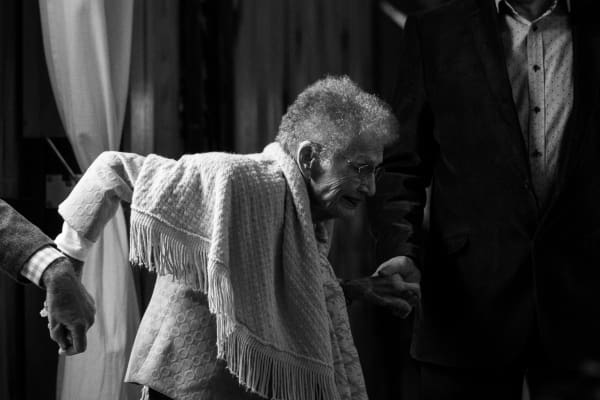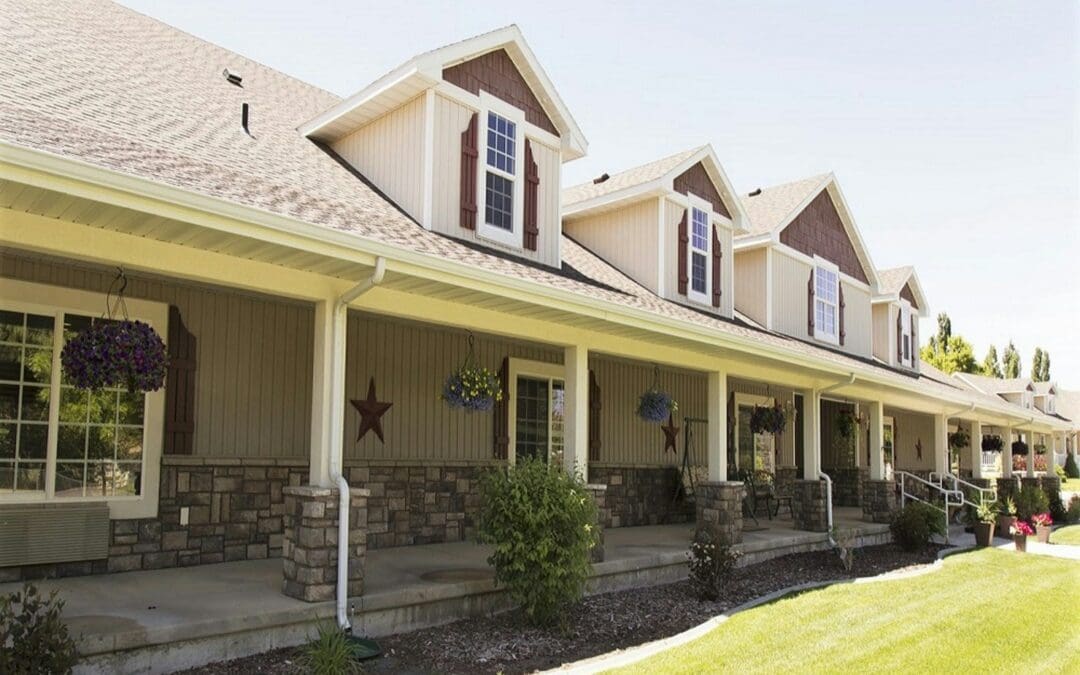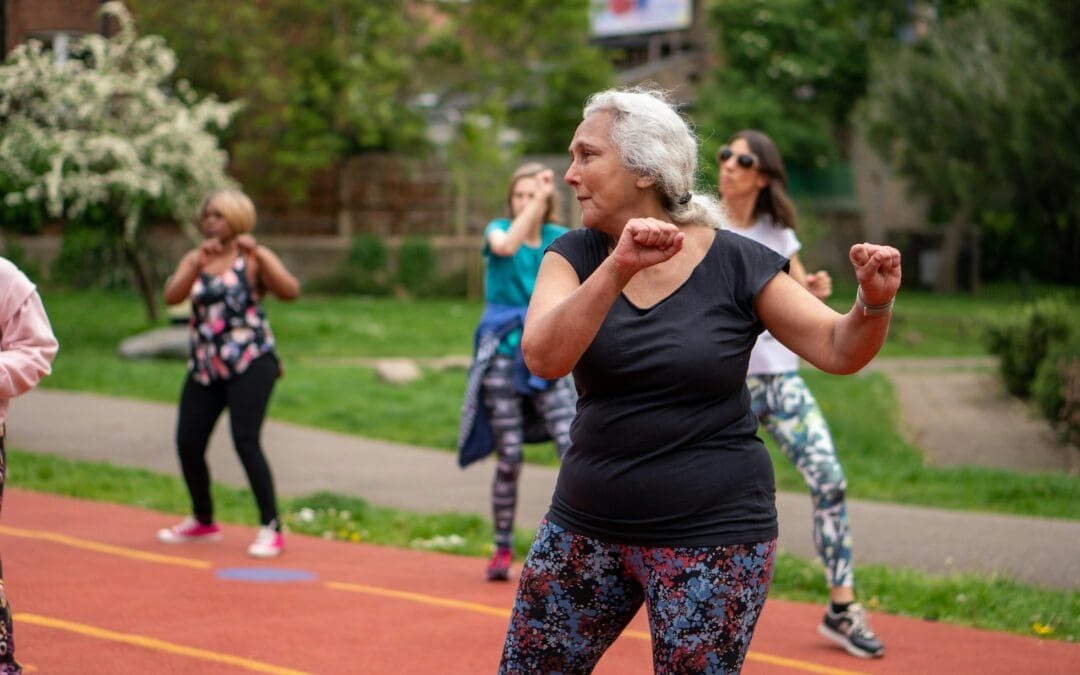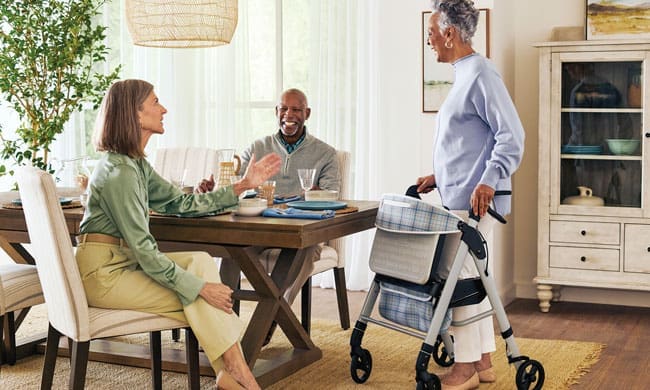
Alzheimer’s Support and Services for Seniors and Caregivers in San Antonio
A Comprehensive Guide

A Comprehensive Guide

Navigating Resources and Community Aid

Essential Signs for San Antonio Families

Understanding Eligibility and Benefits

A Comprehensive Guide to AACOG and Bexar Area Agency on Aging Services

The American Rescue Plan Act (ARPA) has been a beacon of hope for many, particularly vulnerable populations such as older adults.

Unlock Savings on Everyday Expenses

Photo by Online Marketing on Unsplash
Navigating health insurance can be a daunting task, especially for seniors who may be facing unique health challenges. With so many options available, it can be overwhelming to determine which plan is best suited for your needs. Fortunately, there are resources available to help seniors navigate the complex world of health insurance.
This comprehensive guide aims to provide seniors with the knowledge and tools necessary to make informed decisions about their health insurance. From understanding the different types of plans available to deciphering confusing medical bills, this guide covers all aspects of navigating health insurance for seniors. Whether you’re new to Medicare or looking to switch plans, this guide will help you make the best decision for your health and budget.
Understanding Health Insurance
Navigating the world of health insurance can be overwhelming, especially for seniors. It is important to have a basic understanding of health insurance to make informed decisions about your coverage.
What is Health Insurance?
Health insurance is a contract between you and an insurance company that helps cover the cost of medical care. It is designed to protect you from unexpected, high medical costs. You pay a monthly premium to the insurance company, and in exchange, the company pays for some or all of your medical expenses.
Types of Health Insurance Plans
There are several types of health insurance plans, including private insurance and insurance plans offered through the health insurance market. Private insurance is purchased directly from an insurance company, while insurance plans offered through the health insurance market are purchased through the government-run marketplace.
Some common types of health insurance plans include:
Health Maintenance Organization (HMO)
Preferred Provider Organization (PPO)
Point of Service (POS)
High Deductible Health Plan (HDHP)
Each type of plan has its own benefits and drawbacks, and it is important to understand the differences between them when choosing a plan.
Health Insurance Coverage
Health insurance coverage refers to the services that are covered by your insurance plan. This can include doctor visits, hospital stays, prescription drugs, and more. It is important to review your plan’s coverage to ensure that it meets your healthcare needs.
Choosing a Health Insurance Plan
When choosing a health insurance plan, it is important to consider your healthcare needs and budget. You should review the plan’s coverage, deductibles, copays, and premiums to determine which plan is the best fit for you.
In conclusion, understanding health insurance is crucial for seniors to make informed decisions about their healthcare coverage. By understanding the different types of plans, coverage options, and costs, seniors can choose a plan that meets their healthcare needs and budget.
Health Insurance for Seniors
Navigating health insurance can be challenging, especially for seniors. Fortunately, there are several options available to help cover the costs of medical care. One of the most common options for seniors is Medicare, a federal health insurance program primarily designed for people aged 65 and older.
Medicare has several parts, including Part A, which covers hospital stays, and Part B, which covers doctor visits and outpatient services. Part D covers prescription drug costs, and Medicare Advantage plans are an alternative to traditional Medicare.
For those who choose traditional Medicare, they may also want to consider purchasing a Medigap policy. Medigap policies are supplementary insurance plans that help cover the costs that traditional Medicare does not cover, such as deductibles and copayments.
It’s important to note that while Medicare can provide significant coverage, it may not cover all medical costs. Seniors may want to consider additional insurance options, such as long-term care insurance, to help cover the costs of extended care.
Navigating health insurance options can be overwhelming, but seniors can find help through the Senior Health Insurance Counseling Program (SHIP). SHIP provides accurate and objective counseling, assistance, and advocacy relating to Medicare, Medicaid, Medicare supplements, Medicare Advantage, long-term care, and more.
In summary, seniors have several health insurance options available to them, including Medicare, Medigap policies, and additional insurance options like long-term care insurance. It’s important to carefully consider each option and seek help from resources like SHIP to ensure that seniors have the coverage they need.
Eligibility and Enrollment
Navigating health insurance can be a challenge, especially for seniors. Understanding eligibility requirements and the enrollment process is crucial to ensure that you have the coverage you need. Here is what you need to know:
Eligibility
To be eligible for Medicare, you must be a U.S. citizen or a permanent legal resident who has lived in the United States for at least five years and be 65 years of age or older. If you are disabled and under 65, you may also be eligible for Medicare. Disabled Americans who receive Social Security Disability Insurance (SSDI) benefits are automatically enrolled in Medicare after 24 months of receiving benefits.
If you have end-stage renal disease (ESRD), you may also be eligible for Medicare, regardless of age. However, you must meet certain requirements, such as requiring regular dialysis or a kidney transplant.
Enrollment
The enrollment process for Medicare can be overwhelming, but it is important to understand the different enrollment periods. There are three main enrollment periods:
Initial Enrollment Period (IEP): This is the first time you can enroll in Medicare. It starts three months before your 65th birthday and ends three months after your birthday month.
General Enrollment Period (GEP): If you missed your IEP, you can enroll during the GEP, which runs from January 1 to March 31 each year. However, you may have to pay a penalty for late enrollment.
Open Enrollment Period (OEP): This period runs from October 15 to December 7 each year. During this time, you can make changes to your coverage, such as switching from Original Medicare to a Medicare Advantage plan or vice versa.
To enroll in Medicare, you can apply online, by phone, or in person at your local Social Security office.
Conclusion
Navigating health insurance eligibility and enrollment can be a complicated process, but it is essential to ensure that you have the coverage you need. Understanding the different enrollment periods and eligibility requirements can help you make informed decisions about your healthcare coverage.
Types of Health Insurance Plans
When it comes to health insurance plans, seniors have several options to choose from. Understanding the differences between these plans can help seniors make informed decisions about their healthcare coverage. Here are some of the most common types of health insurance plans:
Health Maintenance Organizations (HMOs)
HMOs are a type of managed care plan that typically require members to choose a primary care physician (PCP) who acts as a gatekeeper for all medical services. To see a specialist or receive any type of medical care, members usually need a referral from their PCP. HMOs generally have lower out-of-pocket costs than other types of plans, but members have less flexibility in choosing their healthcare providers.
Preferred Provider Organizations (PPOs)
PPOs are another type of managed care plan, but they offer more flexibility than HMOs. Members can usually see any provider within the plan’s network without a referral, and they may also be able to see out-of-network providers for an additional cost. PPOs generally have higher out-of-pocket costs than HMOs, but they offer more choice and flexibility in healthcare providers.
Point of Service (POS) Plans
POS plans are a hybrid of HMOs and PPOs. Like HMOs, members usually need to choose a PCP who acts as a gatekeeper for medical services. However, like PPOs, members can usually see out-of-network providers for an additional cost. POS plans generally have higher out-of-pocket costs than HMOs, but they offer more flexibility in choosing healthcare providers.
Private Health Insurance Plans
Private health insurance plans are offered by private companies and are not part of a government-sponsored program like Medicare. These plans can vary widely in terms of coverage and cost, so it’s important to carefully review the plan details before enrolling.
Health Savings Accounts (HSAs)
HSAs are a type of savings account that can be used to pay for qualified medical expenses. To be eligible for an HSA, you must have a high-deductible health plan (HDHP). Contributions to an HSA are tax-deductible, and the funds in the account can grow tax-free. HSAs can be a good option for seniors who want to save money on healthcare costs and have more control over their healthcare spending.
Overall, seniors should carefully consider their healthcare needs and budget when choosing a health insurance plan. It’s also important to review the plan details carefully and ask questions if anything is unclear.
Costs and Budgeting
Navigating health insurance costs can be overwhelming, especially for seniors who may be living on a fixed income. Understanding the different costs associated with health insurance and creating a budget can help seniors better manage their healthcare expenses.
Premiums
Premiums are the monthly fee paid to an insurance company for coverage. It is important to note that the premium amount can vary depending on the type of plan and the level of coverage. Seniors may be able to find plans with lower monthly premiums, but it may come with higher out-of-pocket costs.
Deductibles
Deductibles are the amount of money that must be paid out-of-pocket before insurance coverage kicks in. Seniors should consider their healthcare needs when choosing a deductible amount. Plans with lower deductibles may have higher monthly premiums, while plans with higher deductibles may have lower monthly premiums.
Out-of-Pocket Costs
Out-of-pocket costs are expenses that are not covered by insurance and must be paid by the patient. These costs can include deductibles, coinsurance, and copayments. Seniors should be aware of the out-of-pocket maximum, which is the maximum amount they will have to pay in out-of-pocket costs for the year.
Cost-Sharing
Cost-sharing refers to the portion of healthcare costs that are split between the insurance company and the patient. This can include deductibles, coinsurance, and copayments. Seniors should review their plan’s cost-sharing requirements to understand their financial responsibility.
Financial Assistance
Seniors who are struggling to pay for healthcare expenses may be eligible for financial assistance. This can include tax credits, tax deductions, and other forms of financial aid. It is important to research and understand the eligibility requirements for these programs.
Budgeting
Creating a budget can help seniors manage their healthcare expenses. Seniors should consider their monthly premiums, deductibles, and out-of-pocket costs when creating a budget. It is also important to factor in unexpected healthcare expenses that may arise.
Navigating health insurance costs can be challenging, but understanding the different costs associated with coverage and creating a budget can help seniors manage their healthcare expenses and maintain their financial well-being.
Coverage and Benefits
When it comes to health insurance for seniors, it’s important to understand the coverage and benefits that are available to you. Medicare is the federal health insurance program for people aged 65 and older, certain younger people with disabilities, and people with end-stage renal disease. Medicare automatically offers comprehensive healthcare coverage to those who qualify.
Coverage Levels
Medicare is divided into four parts: Part A, Part B, Part C, and Part D. Part A covers hospital stays, hospice care, and skilled nursing facility care. Part B covers doctor visits, medical care, and preventive services. Part C, also known as Medicare Advantage, is an alternative to traditional Medicare and offers additional benefits such as dental care and vision care. Part D covers prescription drugs.
Coverage Limitations
While Medicare provides comprehensive coverage, it does have some limitations. For example, Medicare does not cover long-term care, which includes assistance with daily activities such as bathing, dressing, and eating. It’s important to understand these limitations and plan accordingly.
Healthcare Services
Under Medicare, seniors have access to a wide range of healthcare services, including preventive care, prescription drugs, and medical care. Preventive care includes services such as flu shots, cancer screenings, and annual wellness visits. Prescription drug coverage is available through Part D, and medical care includes services such as doctor visits, hospital stays, and hospice care.
Dental and Vision Care
While dental care and vision care are not covered under traditional Medicare, some Medicare Advantage plans do offer these benefits. It’s important to carefully review the benefits and costs of these plans to determine if they are right for you.
Medical Expenses
While Medicare covers a significant portion of healthcare expenses, there are still some out-of-pocket costs that seniors may incur, such as deductibles, copayments, and coinsurance. It’s important to understand these costs and plan accordingly.
In summary, Medicare provides comprehensive healthcare coverage for seniors, including hospital stays, doctor visits, preventive care, prescription drugs, and more. However, it’s important to understand the limitations and costs associated with Medicare, as well as the additional benefits that may be available through Medicare Advantage plans.
Understanding Medicare Parts
Medicare is a federal health insurance program for people who are 65 or older, certain younger people with disabilities, and people with End-Stage Renal Disease (ESRD). Medicare is divided into four parts: Part A, Part B, Part C, and Part D. In this section, we will discuss the different parts of Medicare.
Medicare Part A
Medicare Part A is also known as hospital insurance. It covers inpatient hospital care, skilled nursing facility care, hospice care, and home health care. Most people do not have to pay a premium for Part A because they or their spouse paid Medicare taxes while working.
Medicare Part B
Medicare Part B is also known as medical insurance. It covers doctor services, outpatient care, preventive services, and medical equipment. You will pay a monthly premium for Part B, and the amount you pay will depend on your income.
Medicare Part D
Medicare Part D is prescription drug coverage. It is offered by private insurance companies approved by Medicare. Part D helps cover the cost of prescription drugs, and the amount you pay will depend on the plan you choose.
It is important to note that Medicare does not cover all health care expenses. You may need additional coverage, such as a Medicare Supplement Insurance (Medigap) policy or a Medicare Advantage Plan (Part C), to help pay for costs that Medicare does not cover.
In summary, understanding the different parts of Medicare is essential to navigating senior health insurance. Part A covers hospital care, Part B covers medical services, and Part D covers prescription drugs. You may need additional coverage to pay for expenses that Medicare does not cover.
Navigating the Health Insurance Market
Navigating the health insurance market can be a daunting task for seniors. There are many options available, and it can be challenging to determine which plan is the best fit for your needs. However, with some research and guidance, it is possible to find a plan that meets your healthcare needs and budget.
One essential factor to consider when selecting a health insurance plan is the network. The network refers to the group of doctors, healthcare providers, and hospitals that have contracted with the insurance provider to offer services to plan members. It is essential to ensure that the plan you choose includes your preferred doctors and healthcare providers. If you have a specific healthcare provider that you prefer, you may want to consider a plan that includes them in their network.
Another option to consider is a preferred provider organization (PPO) plan. PPO plans offer more flexibility when choosing healthcare providers. You can choose to see providers outside of the network, but you will typically pay higher out-of-pocket costs. However, if you have a preferred doctor or hospital that is not in the network, a PPO plan may be a good option.
When selecting a health insurance plan, it is also crucial to consider the insurance provider. You want to choose a reputable insurance provider that has a good track record of paying claims promptly. You can research insurance providers’ ratings and reviews online to help you make an informed decision.
If you are having difficulty navigating the health insurance market, you may want to consider working with a broker. A broker can help you understand your options and find a plan that meets your specific healthcare needs and budget.
In conclusion, navigating the health insurance market can be overwhelming, but with some research and guidance, it is possible to find a plan that meets your healthcare needs and budget. Consider factors such as the network, preferred doctors, healthcare providers, hospitals, insurance provider, and working with a broker to help you make an informed decision.
Additional Considerations
When navigating health insurance as a senior, there are several additional considerations to keep in mind.
Flexibility
Many seniors may require more flexibility in their health insurance coverage due to changing medical needs. It is important to choose a plan that allows for changes and adjustments as needed.
Affordable Care Act
The Affordable Care Act (ACA) has made significant changes to the healthcare system, including expanding coverage options for seniors. It is important to understand how the ACA affects your healthcare costs and coverage options.
Healthcare Costs
Healthcare costs can be a major concern for seniors, especially those with low incomes. It is important to explore all available options for reducing healthcare costs, including Medicare and Medicaid.
Medicaid
Seniors with low incomes may be eligible for Medicaid, a government program that provides healthcare coverage for those who cannot afford it. It is important to understand the eligibility requirements and coverage options for Medicaid.
Life Insurance
Life insurance can provide financial protection for seniors and their loved ones in the event of unexpected medical expenses or other costs. It is important to consider life insurance as part of your overall financial plan.
Medical Bills
Medical bills can be a major source of stress for seniors. It is important to understand your coverage options and to work with your healthcare provider to manage medical bills.
Penalties
Seniors who do not have health insurance may face penalties. It is important to understand the penalties and to explore all available options for obtaining health insurance coverage.
Pre-existing Conditions
Seniors with pre-existing conditions may face challenges in obtaining health insurance coverage. It is important to understand your coverage options and to explore all available options for obtaining coverage.
Financial Advisor and Tax Professional
Working with a financial advisor and tax professional can help seniors make informed decisions about their healthcare coverage and costs.
Short-term Coverage
Short-term coverage may be an option for seniors who need temporary healthcare coverage. It is important to understand the advantages and limitations of short-term coverage.
Screenings
Screenings can help seniors stay healthy and catch potential health issues early. It is important to understand your coverage options for screenings and to work with your healthcare provider to schedule regular screenings.
Gold
Some health insurance plans offer a “gold” level of coverage, which provides more comprehensive coverage than other levels. It is important to understand the advantages and limitations of gold-level coverage.

Photo by Scott Graham on Unsplash
As people age, they face unique legal challenges that younger individuals may not encounter. For seniors and their families, it is essential to have access to legal advice to ensure that their rights are protected and their wishes are respected. From estate planning to healthcare decisions, legal issues can be complex and overwhelming. However, with the right guidance, seniors and their families can navigate the legal system with confidence.
One of the most critical aspects of legal advice for seniors is estate planning. A comprehensive estate plan can help ensure that a senior’s assets are distributed according to their wishes and can minimize the tax burden on their heirs. Additionally, estate planning can include provisions for end-of-life care, such as appointing a healthcare proxy and creating a living will. These documents can help ensure that a senior’s wishes are respected in the event that they are unable to make their own medical decisions.
Another important area of legal advice for seniors is long-term care planning. As seniors age, they may require assistance with daily living activities or require specialized medical care. Long-term care planning can help seniors and their families navigate the complex world of healthcare and ensure that they receive the care they need. This can include exploring options for in-home care, assisted living facilities, and nursing homes. With the right legal advice, seniors and their families can make informed decisions about their care and ensure that their rights are protected.
Understanding Legal Rights and Protections
As seniors age, they face unique legal challenges that require careful consideration of their rights and protections. Understanding the legal landscape is key to ensuring that seniors and their families are able to navigate these challenges effectively. Here are some important legal rights and protections that seniors should be aware of:
Age Discrimination Laws
Age discrimination is a pervasive problem that can affect seniors in a variety of areas, including employment, housing, and healthcare. Fortunately, there are a number of laws in place that protect seniors from age discrimination. The Age Discrimination in Employment Act (ADEA), for example, prohibits employers from discriminating against workers over the age of 40. Similarly, the Fair Housing Act prohibits discrimination against seniors in housing. Seniors who believe they have been the victim of age discrimination should consult with an attorney who specializes in this area of law.
Elder Abuse Laws
Elder abuse is a serious problem that can take many forms, including physical abuse, financial exploitation, and neglect. Fortunately, there are a number of laws in place that protect seniors from elder abuse. These laws vary by state, but typically include provisions for reporting suspected abuse, investigating allegations, and prosecuting perpetrators. Seniors who believe they have been the victim of elder abuse should report the abuse to the appropriate authorities and consult with an attorney who specializes in this area of law.
Healthcare Rights
Seniors have a number of important healthcare rights that are protected by law. These rights include the right to receive medical treatment that is appropriate for their condition, the right to make decisions about their own healthcare, and the right to refuse medical treatment. Seniors who are concerned about their healthcare rights should consult with an attorney who specializes in healthcare law.
In conclusion, seniors and their families should be aware of their legal rights and protections in order to effectively navigate the unique challenges of aging. Age discrimination laws, elder abuse laws, and healthcare rights are just a few examples of the legal protections available to seniors. By understanding these laws and working with experienced attorneys when necessary, seniors can ensure that their legal rights are protected.
Estate Planning Essentials
Estate planning is an important part of preparing for your future and ensuring that your assets are distributed according to your wishes. As a senior or a family member of a senior, it’s important to have a solid estate plan in place. Here are some essential estate planning documents you should consider:
Writing a Will
A will is a legal document that outlines how you want your assets to be distributed after you pass away. It’s important to have a will in place to ensure that your wishes are carried out and your loved ones are taken care of. If you don’t have a will, your assets will be distributed according to state law, which may not align with your wishes.
When writing a will, consider the following:
Choose an executor who will be responsible for carrying out your wishes.
Clearly outline how you want your assets to be distributed.
Update your will regularly to reflect any changes in your circumstances.
Setting Up a Trust
A trust is a legal arrangement where a trustee holds and manages assets for the benefit of one or more beneficiaries. A trust can be useful for managing assets during your lifetime and ensuring that your assets are distributed according to your wishes after you pass away.
When setting up a trust, consider the following:
Choose a trustee who will be responsible for managing the trust.
Clearly outline how you want the assets in the trust to be distributed.
Consider the tax implications of setting up a trust.
Power of Attorney
A power of attorney is a legal document that gives someone else the authority to act on your behalf. This can be useful if you become incapacitated and are unable to make decisions for yourself. There are two types of power of attorney:
Durable power of attorney: This gives someone else the authority to act on your behalf even if you become incapacitated.
Springing power of attorney: This only gives someone else the authority to act on your behalf if you become incapacitated.
When setting up a power of attorney, consider the following:
Choose someone you trust to act on your behalf.
Clearly outline the scope of the power of attorney.
Consider the tax implications of setting up a power of attorney.
Having a solid estate plan in place can give you peace of mind and ensure that your wishes are carried out after you pass away. Consider speaking with an attorney who specializes in estate planning to ensure that your estate plan is comprehensive and legally sound.
Long-Term Care Planning
Planning for long-term care is an essential part of elder law. It is important to start planning as early as possible to ensure that you and your loved ones are prepared for any eventuality. Long-term care planning involves making decisions about where you or your loved one will receive care, who will provide it, and how it will be paid for.
Medicaid Planning
Medicaid is a government-funded program that provides long-term care assistance to those who meet certain income and asset requirements. Medicaid planning involves developing a strategy to protect your assets while still qualifying for Medicaid benefits. This can include transferring assets, creating trusts, and spending down assets to meet eligibility requirements.
It is important to note that Medicaid planning should be done with the guidance of an experienced elder law attorney. Improper planning can result in penalties and disqualification from Medicaid benefits.
Long-Term Care Insurance
Long-term care insurance is a private insurance policy that covers the cost of long-term care. It can provide coverage for nursing home care, in-home care, and assisted living facilities. Long-term care insurance can help protect your assets and provide peace of mind knowing that you or your loved one will be taken care of in the event of a long-term care need.
It is important to carefully review and compare long-term care insurance policies before purchasing. Policies can vary widely in terms of coverage, cost, and eligibility requirements. It is also important to purchase long-term care insurance while you are still healthy and before any long-term care needs arise.
Overall, long-term care planning is an essential part of elder law. Medicaid planning and long-term care insurance are two important tools that can help protect your assets and ensure that you or your loved one receives the care they need.
End-of-Life Decisions
Making decisions about end-of-life care can be difficult, but it is important to have a plan in place to ensure that your wishes are respected. There are two important legal documents that can help you make your wishes known: a living will and a do not resuscitate (DNR) order.
Living Wills
A living will is a legal document that outlines your wishes for medical treatment in the event that you are unable to communicate your wishes yourself. This document can be used to specify what types of medical treatment you want or do not want, such as life support or artificial nutrition and hydration.
It is important to note that a living will only goes into effect if you are unable to make your own medical decisions. If you are able to communicate your wishes, your healthcare providers will follow your instructions directly.
Do Not Resuscitate Orders
A DNR order is a legal document that instructs healthcare providers not to perform cardiopulmonary resuscitation (CPR) if your heart stops or if you stop breathing. This order is typically used for patients who are seriously ill or who have a terminal condition and do not wish to be resuscitated.
It is important to discuss your wishes with your healthcare providers and family members to ensure that everyone is aware of your wishes. You should also keep a copy of your living will and DNR order with you at all times, and provide copies to your healthcare providers and family members.
In conclusion, making end-of-life decisions can be difficult, but having a plan in place can help ensure that your wishes are respected. A living will and DNR order are important legal documents that can help you make your wishes known and ensure that you receive the care you want.
Family Conversations About Legal Matters
When it comes to legal matters, it’s important for seniors and their families to have open and honest conversations. These conversations can help ensure that everyone is on the same page and that the senior’s wishes are respected. Here are some tips for discussing legal matters with your family.
Discussing Estate Plans
One of the most important legal matters to discuss with your family is your estate plan. This includes your will, trusts, and other documents that outline how your assets will be distributed after your death. It’s important to have a clear plan in place so that your wishes are carried out and your family is not left with any confusion or disputes.
When discussing your estate plan, it’s important to be clear about your wishes and to listen to your family’s concerns. You may want to consider hiring an estate planning attorney to help you create a plan that meets your needs and addresses any potential issues.
Communicating Healthcare Wishes
Another important legal matter to discuss with your family is your healthcare wishes. This includes your preferences for medical treatment and end-of-life care. It’s important to have these conversations while you are still able to make decisions for yourself.
When discussing your healthcare wishes, it’s important to be clear about what you want and to listen to your family’s concerns. You may want to consider creating an advance directive or living will to document your wishes and ensure that they are followed.
Overall, having open and honest conversations about legal matters can help ensure that your wishes are respected and that your family is prepared for any potential issues. By working together, you can create a plan that meets your needs and gives you peace of mind.
Finding and Working With an Elder Law Attorney
Finding the right elder law attorney is essential for seniors and their families. Elder law attorneys specialize in legal issues that affect seniors, such as estate planning, Medicaid planning, and long-term care. Here are some tips for finding and working with an elder law attorney:
1. Look for an Attorney with Experience in Elder Law
When searching for an elder law attorney, it’s important to find one with experience in the field. Look for an attorney who has been practicing elder law for several years and has a good reputation in the community. You can ask for referrals from friends, family members, or other professionals, such as financial advisors or social workers.
2. Check Their Credentials
Make sure the attorney you choose is licensed to practice law in your state. You can check their credentials by contacting your state bar association or by visiting their website. You can also check if they are a member of the National Academy of Elder Law Attorneys (NAELA), which is a professional association for elder law attorneys.
3. Schedule a Consultation
Before hiring an elder law attorney, schedule a consultation to discuss your legal needs. During the consultation, you can ask questions about their experience, fees, and how they can help you. You can also get a sense of their communication style and whether you feel comfortable working with them.
4. Understand Their Fees
Elder law attorneys typically charge by the hour or a flat fee for their services. Make sure you understand their fees and what services are included. You should also ask about any additional costs, such as court fees or filing fees.
5. Communicate Clearly
When working with an elder law attorney, it’s important to communicate clearly and honestly. Make sure you provide all the necessary information and documents they need to help you. You should also ask questions if you don’t understand something or if you have concerns about the legal process.
By following these tips, you can find an elder law attorney who can help you navigate the complex legal issues that affect seniors and their families.

Image by Sabine van Erp from Pixabay
As our loved ones age, it’s important to understand the different types of elderly care options available to them. This can range from in-home care to assisted living facilities, nursing homes, and more. Knowing the different types of care can help you make informed decisions that best suit your loved one’s needs.
One of the most common types of elderly care is in-home care, which allows seniors to receive assistance with daily activities while remaining in the comfort of their own home. This can include help with tasks such as bathing, dressing, and meal preparation. Another option is assisted living facilities, which offer a more structured environment with 24-hour care and social activities for seniors. Nursing homes are another option for those who require more extensive medical care and supervision.
Understanding the different types of elderly care options available can be overwhelming, but it’s important to take the time to research and make informed decisions. By doing so, you can ensure that your loved one receives the care and support they need to live a happy and fulfilling life.
Understanding Elderly Care
As people age, they may require some level of assistance or care to help with issues such as health problems, decreased mobility, or other age-related factors. There are different types of elderly care options available to seniors and their families, depending on their specific needs and preferences.
Types of Elderly Care
Some of the most common types of elderly care options include:
In-home care: This type of care involves a caregiver coming to the senior’s home to provide assistance with daily activities, such as bathing, dressing, and meal preparation. In-home care can be a good option for seniors who want to maintain their independence and stay in their own homes.
Assisted living: Assisted living facilities provide seniors with a range of services, including meals, housekeeping, and assistance with activities of daily living. This type of care is ideal for seniors who need more support than in-home care can provide, but who do not require round-the-clock medical care.
Memory care: Memory care facilities are designed for seniors with Alzheimer’s or other forms of dementia. These facilities provide specialized care, including structured activities and therapies, to help seniors maintain their cognitive function and quality of life.
Nursing homes: Nursing homes provide round-the-clock medical care and supervision for seniors who require more advanced care due to chronic health conditions or disabilities.
Payment Options
Elderly care can be expensive, and it’s important to understand the payment options available. Some of the most common payment sources include:
Government programs: Medicare and Medicaid are two government programs that can help cover the cost of elderly care. Medicare typically covers short-term stays in nursing homes or home health care, while Medicaid can provide long-term care coverage for seniors with limited financial resources.
Long-term care insurance: Long-term care insurance is a type of insurance policy that can help cover the cost of elderly care. This type of insurance can be expensive, but it can provide peace of mind for seniors and their families.
Other financing options: There are other financing options available for elderly care, including personal savings, home equity loans, and reverse mortgages. It’s important to explore all options and choose the one that best fits your financial situation.
Understanding the different types of elderly care options and payment sources can help seniors and their families make informed decisions about their care. It’s important to consider factors such as cost, location, and level of care when choosing an elderly care option.
Types of Elderly Care
When it comes to elderly care, there are various options available depending on the needs of the individual. Here are some of the most common types of elderly care:
Assisted Living
Assisted living is a type of elderly care that provides assistance with daily living activities such as bathing, dressing, and medication management. Residents typically live in private apartments or shared rooms and have access to communal spaces and activities. Assisted living facilities are a good option for seniors who need some assistance with daily living activities but still want to maintain their independence.
Nursing Home Care
Nursing homes provide 24-hour skilled nursing care for seniors who require more medical attention than what can be provided in assisted living facilities. Nursing homes also offer rehabilitation services for seniors recovering from an illness or injury. Nursing homes are a good option for seniors who require constant medical attention and supervision.
Independent Living
Independent living is a type of elderly care that provides seniors with their own private living spaces, often in the form of apartments or condos. Independent living facilities typically offer communal spaces and activities for seniors to socialize and stay active. Independent living is a good option for seniors who are still able to live independently but want to downsize their living space and have access to social activities.
Dementia Care and Memory Care
Dementia care and memory care are specialized types of elderly care that cater to seniors with Alzheimer’s disease or other forms of dementia. These facilities provide a safe and secure environment for seniors with memory loss and offer specialized care and activities to help maintain cognitive function.
Skilled Nursing
Skilled nursing facilities provide 24-hour nursing care for seniors who require medical attention and supervision. These facilities are equipped to handle complex medical conditions and provide rehabilitation services for seniors recovering from an illness or injury.
Respite Care
Respite care provides temporary relief for caregivers who need a break from caring for their loved ones. Respite care can be provided in a variety of settings, including in-home care, adult day care, and residential care facilities.
Hospice
Hospice care is a type of end-of-life care that focuses on providing comfort and support for seniors with a terminal illness. Hospice care can be provided in a variety of settings, including in-home care, residential care facilities, and hospitals.
Long-Term Care
Long-term care refers to a range of services provided to seniors who require ongoing assistance with daily living activities. Long-term care can be provided in a variety of settings, including in-home care, residential care facilities, and nursing homes.
In-Home Care
In-home care provides assistance with daily living activities for seniors who wish to remain in their own homes. In-home care can be provided by family members or professional caregivers and can include services such as meal preparation, medication management, and transportation.
Adult Day Care
Adult day care provides socialization and activities for seniors during the day while their caregivers are at work or otherwise unavailable. Adult day care centers typically provide meals, activities, and transportation for seniors.
Overall, there are many options available for elderly care depending on the needs of the individual. It is important to research and compare different types of elderly care to find the best fit for your loved one.
Understanding Assisted Living
Assisted living is a popular choice for seniors who need help with daily tasks and activities but still want to maintain their independence. According to U.S. News, assisted living communities provide a combination of housing, support services, and healthcare to seniors who need assistance with activities of daily living (ADLs) such as bathing, dressing, and medication management.
One of the biggest benefits of assisted living is that staff is available 24/7 to provide support and assistance as needed. This means that seniors can receive help with tasks like housekeeping, laundry, and dining, as well as with socialization and security. Many assisted living communities also offer a range of activities and events to help seniors stay active and engaged.
It is important to note that assisted living is not the same as fully independent living. While seniors in assisted living communities have their own private living spaces, they also have access to staff and support services as needed. This can be a good option for seniors who need some assistance but still want to maintain their independence.
Overall, assisted living can be a great option for seniors who need help with daily tasks and activities but still want to maintain their independence. With 24/7 staff support, a range of activities and events, and access to healthcare services, assisted living communities can provide seniors with the support they need to live comfortably and safely.
Nursing Homes and Skilled Nursing Facilities
Nursing homes and skilled nursing facilities (SNFs) provide round-the-clock care for elderly individuals who require medical attention and assistance with daily activities. While both types of facilities offer similar services, there are some key differences to consider.
Nursing Homes
Nursing homes are residential facilities that provide long-term care for individuals who require assistance with activities of daily living (ADLs), such as bathing, dressing, and eating. They also offer medical care and supervision by licensed nurses and physicians.
Nursing homes are a good option for individuals who require regular medical attention but do not need the level of care provided by a hospital. They also offer a sense of community and socialization opportunities for residents.
Skilled Nursing Facilities
Skilled nursing facilities (SNFs) are similar to nursing homes but provide a higher level of medical care. They offer round-the-clock care by licensed nurses and physicians, as well as physical, occupational, and speech therapy services.
SNFs are a good option for individuals who require short-term rehabilitation services after a hospital stay or surgery. They also provide specialized care for individuals with chronic medical conditions, such as Alzheimer’s or Parkinson’s disease.
Choosing Between Nursing Homes and Skilled Nursing Facilities
Choosing between a nursing home and a skilled nursing facility depends on the individual’s specific needs. If the individual requires regular medical attention and supervision, a skilled nursing facility may be the better option. However, if the individual requires assistance with ADLs and socialization opportunities, a nursing home may be a better fit.
It is important to research and visit multiple facilities before making a decision. Consider factors such as location, cost, and quality of care when making a decision.
Memory Care Facilities
Memory care facilities are specialized living communities designed to provide care and support to seniors with cognitive impairments such as dementia and Alzheimer’s. These facilities offer a safe and secure environment that is tailored to meet the unique needs of individuals with memory-related conditions.
Memory care facilities are staffed with trained professionals who understand the challenges associated with cognitive impairments. They provide round-the-clock care and support to ensure that residents receive the attention and assistance they need to maintain their quality of life.
One of the most significant benefits of memory care facilities is the availability of stimulating activities that are designed to engage residents and promote cognitive function. These activities may include music therapy, art classes, and games that are specifically designed to improve memory and cognitive function.
Memory care facilities also offer a range of services that are designed to meet the unique needs of individuals with cognitive impairments. These services may include medication management, assistance with activities of daily living, and specialized programs that are tailored to meet the needs of individuals with memory-related conditions.
In summary, memory care facilities are an excellent option for seniors with cognitive impairments who require specialized care and support. These facilities offer a safe and secure environment, round-the-clock care, and engaging activities that are designed to promote cognitive function and improve quality of life.
In-Home and Respite Care
Two common types of elderly care options are in-home care and respite care. In-home care involves someone visiting the person in need at their home to help them with daily activities. This type of care is best for those who prefer to live in the comfort of their own homes and communities as they age. In-home care can be provided by a family member, friend, or skilled caregiver.
Respite care, on the other hand, provides temporary relief for a primary caregiver, enabling them to take a much-needed break from the demands of caregiving a sick, aging, or disabled family member. This type of care can take place in the person’s own home, at day-care centers, or at residential or nursing facilities that offer overnight stays.
In-home care and respite care can greatly improve the quality of life for both the person in need of care and their loved ones. In-home care allows the person to remain in their familiar surroundings, which can provide comfort and a sense of security. Respite care, on the other hand, allows caregivers to take a break from their caregiving duties, which can help prevent burnout and improve their own quality of life.
It’s important to note that in-home care and respite care may not be suitable for everyone. The type of care needed depends on the person’s specific needs and circumstances. It’s important to consult with a healthcare professional or eldercare specialist to determine which type of care is best for you or your loved one.
Hospice and Long-Term Care
Hospice and long-term care are two options for elderly care that serve different purposes. Hospice care is designed to provide comfort and support to individuals who are nearing the end of their life. Long-term care, on the other hand, is intended for individuals who require ongoing support with activities of daily living due to physical or cognitive impairments.
Hospice Care
Hospice care is typically provided in the individual’s home, but it can also be provided in a hospice facility. Hospice care is designed to provide comfort and support to individuals who are in the final stages of a terminal illness. The goal of hospice care is to help individuals live as comfortably as possible in their remaining days.
Hospice care is provided by a team of professionals, including nurses, social workers, chaplains, and volunteers. The team works together to provide physical, emotional, and spiritual support to the individual and their family. Hospice care may also include pain management, symptom control, and other medical services as needed.
Long-Term Care
Long-term care is designed for individuals who require ongoing support with activities of daily living due to physical or cognitive impairments. Long-term care can be provided in a variety of settings, including nursing homes, assisted living facilities, and in the individual’s home.
Long-term care is typically provided by a team of professionals, including nurses, social workers, and geriatric care managers. The team works together to provide ongoing support to the individual and their family. Long-term care may include assistance with activities of daily living, medication management, and other medical services as needed.
In conclusion, hospice and long-term care are two options for elderly care that serve different purposes. Hospice care is designed to provide comfort and support to individuals who are nearing the end of their life, while long-term care is intended for individuals who require ongoing support with activities of daily living due to physical or cognitive impairments. Both options are provided by a team of professionals who work together to provide support to the individual and their family.
Financial Considerations
When it comes to elderly care options, the financial considerations can be a significant factor in the decision-making process. The cost of care can vary widely depending on the type of care needed, the location, and the level of assistance required. Here are some financial considerations to keep in mind:
Low-cost options
For those on a tight budget, there are low-cost options available, such as in-home care or adult day care centers. These options tend to be less expensive than nursing homes or assisted living facilities. Medicaid is another option for those who meet certain income and asset requirements.
High-cost options
On the other end of the spectrum, nursing homes and memory care facilities tend to be the most expensive options. However, these options may be necessary for those who require a high level of medical care or supervision.
Medicaid and Medicare
Medicaid and Medicare are government-funded programs that can help cover the cost of elderly care. Medicaid is designed for those with low income and assets, while Medicare is available to those over 65 or with certain disabilities. Both programs have specific eligibility requirements and may not cover all types of care.
Insurance
Long-term care insurance is another option for covering the cost of elderly care. This type of insurance can help cover the cost of nursing homes, assisted living facilities, and in-home care. It is important to carefully review the policy and understand what is covered and what is not.
Investment
For those who have significant assets, investment options may be available to help cover the cost of elderly care. This could include selling off assets, such as a second home or rental property, or using retirement savings to pay for care.
PACE
PACE (Programs of All-Inclusive Care for the Elderly) is a program that provides comprehensive medical and social services to individuals over 55 who require nursing home-level care but wish to remain in their own homes. PACE is funded by Medicare and Medicaid and may be an option for those who meet the eligibility requirements.
In summary, there are various financial considerations to keep in mind when it comes to elderly care options. It is important to carefully review all options and understand the costs and eligibility requirements before making a decision.
Choosing the Right Care Option
Choosing the right care option for your elderly loved one can be a challenging decision. It is essential to consider their needs, preferences, and budget when selecting a care option. This section will provide an overview of different care options available and factors to consider when choosing the right care option.
Levels of Care
Senior living communities offer different levels of care to meet the varying needs of seniors. The different levels of care include independent living, assisted living, memory care, and skilled nursing. Independent living communities are ideal for seniors who are still active and do not require assistance with daily activities. Assisted living communities offer assistance with daily activities, such as bathing, dressing, and medication management. Memory care communities cater to seniors with Alzheimer’s or dementia. Skilled nursing communities offer around-the-clock medical care for seniors with complex medical needs.
Continuing Care Retirement Communities (CCRCs)
CCRCs are senior living communities that offer different levels of care under one roof. Seniors can move between different levels of care as their needs change without having to move to a different community. CCRCs offer a continuum of care that includes independent living, assisted living, memory care, and skilled nursing.
Personal Care Homes
Personal care homes are residential homes that offer care and support to seniors who require assistance with daily activities. These homes provide a more intimate and homely environment than larger senior living communities. Personal care homes offer assistance with daily activities, such as bathing, dressing, and medication management.
Retirement Homes
Retirement homes are senior living communities that offer independent living with amenities such as housekeeping, transportation, and social activities. These communities are ideal for seniors who are still active and do not require assistance with daily activities.
When choosing the right care option, it is essential to consider the level of care required, the location, amenities, and cost. It is also crucial to visit different communities, talk to staff and residents, and ask questions to ensure that the care option meets your loved one’s needs and preferences.
Legal and Medical Considerations
When it comes to elderly care, there are several legal and medical considerations that need to be taken into account. These considerations can affect the type of care that is provided and the options that are available.
Legal Considerations
One important legal consideration is the form of care that is provided. There are several different forms of care available, including in-home care, assisted living, and nursing homes. Each of these forms of care has different legal requirements and regulations that must be followed.
Another legal consideration is licensing. Many types of elderly care facilities are required to be licensed by the state in which they operate. This licensing ensures that the facility meets certain standards of care and safety. It is important to ensure that any facility you are considering is properly licensed.
Medical Considerations
When it comes to medical care, there are several important considerations to keep in mind. One consideration is medication. Elderly individuals often require multiple medications, and it is important to ensure that these medications are being properly managed. This may involve working with doctors and other healthcare providers to ensure that medications are being taken as prescribed and that there are no adverse interactions.
Another consideration is treatment for specific symptoms or conditions. Elderly individuals may experience a range of symptoms and conditions, such as dementia, arthritis, or diabetes. It is important to ensure that any care provided addresses these specific needs.
Finally, disability and health care services should be considered. Elderly individuals may have disabilities that require special accommodations or equipment. Additionally, they may require access to specialized health care services, such as physical therapy or occupational therapy.
Overall, it is important to take legal and medical considerations into account when selecting an elderly care option. By doing so, you can ensure that the care provided is safe, effective, and meets the specific needs of the individual receiving care.
Planning Ahead for Elderly Care
As people age, it becomes important to plan ahead for their care. This can involve deciding on the type of care needed, selecting a care provider, and making financial arrangements. Planning ahead can help ensure that elderly loved ones receive the care they need and deserve.
Aging in Place
Many seniors prefer to age in place, which means living in their own homes for as long as possible. This can be a good option for seniors who are in good health and have a support system in place. However, it is important to plan ahead for any future care needs that may arise.
Contact and Communication
It is important to stay in contact with elderly loved ones and to communicate with them about their care needs. This can involve having regular check-ins, discussing any health concerns, and making sure they have access to necessary resources and services.
Caregiving
For seniors who require more assistance, there are a variety of caregiving options available. This can include in-home caregivers, board and care homes, and skilled nursing facilities. It is important to research and compare different options to find the best fit for the individual’s needs and preferences.
Financial Planning
Planning ahead for elderly care also involves making financial arrangements. This can include setting up a savings plan, purchasing long-term care insurance, and exploring government assistance programs. It is important to consider all available options and to consult with a financial advisor when making these decisions.
In summary, planning ahead for elderly care can help ensure that seniors receive the care they need and deserve. This involves considering aging in place options, staying in contact and communicating with loved ones, researching and comparing caregiving options, and making financial arrangements.

Photo by RDNE Stock project
As our parents age, they may need to downsize their homes for various reasons. This can be a difficult process for them, as it often involves letting go of possessions that hold sentimental value and adjusting to a new living space. As their children, it is important that we provide support and guidance throughout this transition.
There are many factors to consider when helping your aging parents downsize their home. From planning ahead to treating their personal possessions with respect, there are several steps you can take to make the process smoother and less stressful for everyone involved. It is important to approach the downsizing conversation with sensitivity and a willingness to listen to your parents’ needs and wants. By doing so, you can help them make informed decisions about what to keep, what to donate, and what to discard.
Understanding the Need for Downsizing
As our parents age, their physical and mental abilities may decline, and they may need more assistance with daily activities. Downsizing from a larger home to a smaller, more manageable single-story home or assisted living facility may become necessary for their safety and well-being.
Aging parents may also find it challenging to maintain their current home due to physical limitations or financial constraints. Downsizing can help reduce their expenses and free up money for other necessities.
It’s essential to approach the subject of downsizing with sensitivity and respect. Many seniors have a strong emotional attachment to their home and belongings, and the idea of downsizing can be overwhelming. It’s crucial to involve them in the decision-making process and allow them to have a say in what happens to their possessions.
Safety is another critical factor to consider when downsizing. A smaller, more manageable home or assisted living facility can provide a safer environment for aging parents. It can also help reduce the risk of falls and other accidents, which can be more dangerous for seniors.
In summary, downsizing can be a difficult decision for aging parents, but it may become necessary for their safety and well-being. It’s crucial to approach the subject with sensitivity and respect and involve them in the decision-making process. Downsizing can also help reduce expenses and provide a safer environment for seniors.
Planning the Downsizing Process
Downsizing can be an overwhelming process for anyone, but it can be particularly challenging for aging parents who have lived in their home for many years. Planning ahead and setting realistic goals can help make the process smoother and less stressful for everyone involved.
Start Early and Create a Checklist
One of the most important things you can do when helping your aging parents downsize is to start early. It’s never too soon to begin planning and preparing for the move. Encourage your parents to start decluttering and sorting through their belongings as soon as possible, so they have plenty of time to make decisions about what to keep, sell, donate, or discard.
Creating a checklist can also be helpful in keeping the downsizing process organized and on track. A notebook or template can be used to keep track of tasks that need to be completed, deadlines, and important contact information.
Set Realistic Goals
It’s important to set realistic goals when downsizing. While it may be tempting to try to get rid of everything all at once, this can be overwhelming and unrealistic. Encourage your parents to start with one room at a time and to focus on the most important items first. This can help make the process more manageable and less stressful.
Consider Professional Help
If the downsizing process is particularly challenging, or if your parents have a lot of items that need to be sold or donated, it may be worth considering professional help. There are many companies that specialize in helping seniors downsize and move, and they can provide valuable support and guidance throughout the process.
In conclusion, planning ahead, setting realistic goals, and creating a checklist can help make the downsizing process smoother and less stressful. Encourage your aging parents to start early and to focus on the most important items first. Consider professional help if necessary, and remember to be patient and supportive throughout the process.
Involving Family Members
When it comes to helping your aging parents downsize their home, involving other family members can be incredibly helpful. It not only lightens the load for you, but it also allows your parents to feel supported by their loved ones during this potentially difficult process.
Start by having an open conversation with your siblings or other family members who will be involved in the decision-making process. This will help ensure that everyone is on the same page and can work together to make the downsizing process as smooth as possible.
It’s important to keep in mind that emotions may run high during this time. Your parents may be sentimental about certain items, and it can be tough to let go of things that have been a part of their lives for many years. This is where emotional support from family members can be especially valuable.
Consider having a family meeting to discuss the downsizing process and to allow everyone to voice their concerns and opinions. This can help ensure that everyone feels heard and that the downsizing process is a collaborative effort.
It’s also important to delegate tasks and responsibilities among family members. This can help ensure that everyone is contributing and that the workload is evenly distributed. For example, one sibling may be responsible for organizing and packing up the kitchen, while another may be in charge of sorting through old paperwork.
By involving family members in the downsizing process, you can make it a more manageable and supportive experience for everyone involved.
Hiring Professional Help
Downsizing can be a daunting task, especially for seniors who have accumulated a lifetime of possessions. Hiring a professional can help make the process smoother and less stressful. Here are some options to consider:
Move Managers
Move managers are professionals who specialize in helping seniors downsize and relocate. They can handle everything from sorting and packing to coordinating the move and setting up the new home. Senior move managers are specifically trained to work with older adults and are members of the National Association of Senior Move Managers (NASMM).
Real Estate Agents
Real estate agents can help seniors sell their current home and find a new one that better suits their needs. They can also provide guidance on the local housing market and help seniors navigate the buying and selling process.
Senior Relocation Specialists
Senior relocation specialists are professionals who specialize in helping seniors move. They can provide a range of services, including packing, organizing, and coordinating the move. Some senior relocation specialists are also certified move managers.
Professional Organizers
Professional organizers can help seniors sort through their possessions and decide what to keep, donate, or sell. They can also provide guidance on how to organize the remaining items in the new home.
Movers
Movers can help seniors transport their belongings to their new home. It’s important to choose a reputable moving company that has experience working with seniors and can handle any special needs or requests.
When hiring professional help, it’s important to do your research and choose a reputable provider. Look for reviews and recommendations from other seniors and their families. And don’t be afraid to ask questions and clarify any concerns you may have. With the right professional help, downsizing can be a manageable and even enjoyable experience.
Sorting and Decluttering
When helping your aging parents downsize their home, it’s important to start with sorting and decluttering. This process can be overwhelming, but it’s crucial to make the downsizing process easier and more manageable. Here are a few tips to help you get started:
1. Take it one room at a time
Start by tackling one room at a time. This approach will help you stay focused and avoid feeling overwhelmed. Begin with the least sentimental room and work your way up to the most sentimental ones. For example, start with the bathroom, then move to the kitchen, and finally tackle the living room.
2. Sort items into categories
Sort items into categories such as keep, donate, sell, or throw away. This process will help you stay organized and make decisions about what to keep and what to let go of. Encourage your parents to keep only items that they use or truly love. If an item has not been used or worn in over a year, it’s likely time to let it go.
3. Address sentimental items with care
Sorting through sentimental items can be challenging. Encourage your parents to keep only items that hold significant sentimental value. For example, a family heirloom or a piece of jewelry passed down through generations. Consider taking pictures of sentimental items that your parents are willing to part with. This way, they can still cherish the memories without having to keep the physical item.
4. Consider donating or selling collectibles
If your parents have a collection of items that they no longer use or need, consider donating or selling them. For example, if they have a collection of books, consider donating them to a local library or selling them online. This process will help minimize clutter and make the downsizing process easier.
Sorting and decluttering can be a challenging process, but it’s an essential step in helping your aging parents downsize their home. By taking it one room at a time, sorting items into categories, addressing sentimental items with care, and considering donating or selling collectibles, you can make this process easier and more manageable.
Selling, Donating and Disposing Items
When helping your aging parents downsize, one of the biggest challenges is figuring out what to do with all the stuff they no longer need or want. There are several options for selling, donating, and disposing of items, and the best choice will depend on the type of item, its condition, and your parents’ preferences.
Selling
Selling items can be a great way to make some extra cash while also decluttering. Some options for selling items include:
Online marketplaces like eBay and Craigslist
Local buy/sell/trade groups on Facebook
Garage sales or yard sales
Consignment shops
Auctions
Estate sales
Before selling items, it’s important to do some research to determine their value and decide on a fair price. You may also need to clean or repair items to make them more appealing to buyers. Keep in mind that selling items can be time-consuming and may not always be the most profitable option.
Donating
Donating items is a great way to give back to the community while also getting rid of unwanted items. Some options for donating items include:
Local charities and non-profits
Thrift stores like Goodwill or the Salvation Army
Donation centers like The Habitat for Humanity ReStore
Before donating items, it’s important to check with the organization to see what items they accept and if they have any specific guidelines or restrictions. Keep in mind that donations may not be tax-deductible.
Disposing
For items that are in poor condition or cannot be sold or donated, disposing of them may be the best option. Some options for disposing of items include:
Recycling centers
Junk removal services
Landfills
Before disposing of items, it’s important to check with your local municipality to see what their guidelines are for disposing of different types of items. Some items may require special handling or disposal methods.
Overall, when helping your aging parents downsize, it’s important to be patient and understanding. Sorting through a lifetime of belongings can be emotional and overwhelming. By taking the time to consider all the options for selling, donating, and disposing of items, you can help make the downsizing process smoother and less stressful for everyone involved.
Packing and Moving
Packing and moving can be one of the most challenging parts of downsizing for seniors. It can be overwhelming to sort through years of memories and possessions, and it can be difficult to know what to keep and what to get rid of. However, with some planning and preparation, packing and moving can be a smooth and stress-free process.
Hiring a Moving Company
One of the first steps in the packing and moving process is to consider hiring a moving company. A reputable moving company can help make the process easier by providing packing materials, packing services, and transportation of belongings. When choosing a moving company, it is important to do research and read reviews to ensure that you are hiring a reliable and trustworthy company.
Downsizing Furniture
When downsizing, it is important to consider the size of the new home and the amount of furniture that can fit comfortably. It may be necessary to sell or donate some furniture in order to make the move easier. It is important to choose furniture that is functional and fits the needs of the new home.
Packing Tips
When packing, it is important to label boxes clearly and keep a detailed inventory of belongings. This can help make unpacking easier and ensure that nothing is lost or misplaced during the move. It is also important to pack fragile items carefully and to use padding and bubble wrap to prevent damage.
Final Thoughts
Packing and moving can be a challenging process, but with some planning and preparation, it can be a smooth and stress-free experience. Hiring a reputable moving company, downsizing furniture, and using packing tips can help make the process easier and ensure that belongings are safe during the move.
Dealing with Important Documents
When helping your aging parents downsize, it’s important to handle their important documents with care. Here are some tips to help you navigate this process:
Identify Important Papers
The first step is to identify all the important papers that your parents have. These may include birth certificates, deeds, wills, passports, and other important documents. Make a list of all the documents and their locations, and keep it in a safe place.
Secure Important Documents
Once you have identified all the important papers, it’s important to secure them. Keep them in a fireproof safe or a safety deposit box at a bank. Make sure that your parents have access to the documents when they need them.
Dispose of Unnecessary Documents
Dispose of any unnecessary documents that your parents no longer need. Shred any documents that contain personal information, such as bank statements or credit card bills. Donate or recycle any documents that are no longer needed.
Create Digital Copies
Consider creating digital copies of important documents. Scan them and save them to a secure cloud-based storage service or a USB drive. This will ensure that the documents are easily accessible and can be retrieved in case of an emergency.
Update Information
Make sure that all the important documents are up to date. Update any information that has changed, such as addresses or phone numbers. Review wills and other legal documents to ensure that they reflect your parents’ current wishes.
By following these tips, you can help your aging parents downsize their home while ensuring that their important documents are handled with care and security.
Handling the Emotional Aspect of Downsizing
Downsizing can be an emotionally challenging process for aging parents. It’s important to approach the situation with experience and compassion to ensure that the process goes smoothly. Here are a few tips to help handle the emotional aspect of downsizing:
Acknowledge their feelings: Downsizing can be a difficult experience for aging parents who have spent many years in their home. It’s important to acknowledge their feelings and validate their emotions. Let them know that you understand how hard it is for them to let go of their home and belongings.
Make it an adventure: Downsizing can also be an opportunity for adventure. Encourage your parents to view it as a new chapter in their lives. Help them see the positive aspects of downsizing, such as the opportunity to declutter and simplify their lives.
Be prepared for a crisis: Downsizing can be stressful, and it’s important to be prepared for a crisis. Make sure you have a plan in place in case your parents become overwhelmed or emotional. This could include having a support system in place, such as a therapist or counselor.
Stay organized: Staying organized is key to a successful downsizing process. Create a plan and timeline for the move, and make sure everyone involved is on the same page. Use tables and bullet points to keep track of important information, such as what items will be kept, donated, or sold.
By approaching the downsizing process with experience, compassion, and a positive attitude, you can help your aging parents navigate this challenging time with ease.
Post-Move Organization and Settling In
Once your aging parents have downsized and moved into their new home, it’s time to focus on post-move organization and settling in. This can be a daunting task, but with a little planning and preparation, it can be a smooth and stress-free process.
Unpacking
Start by unpacking the essentials first, such as bedding, toiletries, and kitchen items. This will help your parents feel more comfortable and at home right away. Make sure to label boxes clearly and prioritize which boxes to unpack first.
Cleaning
Before unpacking, it’s a good idea to give the new home a thorough cleaning. This includes wiping down surfaces, vacuuming or sweeping floors, and cleaning bathrooms and kitchens. If your parents are unable to do this themselves, consider hiring a professional cleaning service to help.
Organizing
Once everything is unpacked and the home is clean, it’s time to start organizing. This can be a great opportunity to declutter and get rid of any items that your parents no longer need or want. Consider using storage solutions such as shelving, baskets, and bins to help keep things organized.
Home Modifications
Depending on your parents’ needs, it may be necessary to make some modifications to their new home. This could include installing grab bars in the bathroom, adding ramps or stairlifts, or lowering shelves and cabinets for easier access. Consider consulting with a professional to help determine the best modifications for your parents’ specific needs.
Overall, post-move organization and settling in can take some time and effort, but with a little planning and preparation, it can be a smooth and stress-free process. Remember to take things one step at a time and prioritize what needs to be done first.

3 Stylish Safety and Mobility Products
(Family Features) While aging is inevitable, it doesn’t mean you can’t do so with grace and style. For many seniors hoping to look and feel their best, there are plenty of options, from the clothing they wear to products they use every day. Choosing more ‘stylish’ safety accessories is one way to go.
To improve quality of life and inspire confidence, Medline, a leading provider of consumer medical products, teamed up with Martha Stewart to introduce the Martha Stewart Home Comfort Care Collection. The line of design-inspired safety and mobility products combines sophisticated design and dependability to help those who use them look and feel their best.
“We are excited to enter into this unique partnership,” said Dawn Freitag, Medline senior marketing manager. “Martha Stewart’s signature style has always set the standard for better, more enjoyable living and this line of mobility and bath safety products is no exception. We believe these fashionable, modern designs along with our top-rated quality and value pricing will help seniors live their happiest, healthiest lives with exceptional safety, security and style.”
Consider these supportive care products to maximize style and safety, and find the full collection by visiting athome.medline.com.
Around the HomeThe right mobility aid can help you navigate your home. One option, the Adjustable Rolling Walker, combines a chic, sporty checked pattern with renowned functional features to help you easily stand and walk safely and independently. Its smooth-rolling, all-terrain wheels make it easy to get around in or outside of your home while push-down, locking brakes are ready for a rest stop at any time. Plus, it easily folds for travel and storage, and features under-seat storage and adjustable easy-grip handles for a custom fit and fashionable function.
For the BathroomThe most essential purpose of bathroom safety aids is to prevent falls on wet, slippery surfaces. Beyond securely-attached bath mats and grab bars, the Martha Stewart Euro-Style Shower Chair allows you to sit while showering for extra peace of mind. With built-in handgrips and a backrest for comfort, the rust-resistant chair also features adjustable, push-button height settings to improve stability and built-in Microban protection to resist mold and mildew.
In the BedroomThere are numerous products designed to maximize rest, relaxation and safety in and around your bed. To help you get in and out of bed, an Adjustable Bed Assist Bar slides around the side of the mattress – without floor legs that may pose a tripping hazard – to offer support. With a stylish faux woodgrain bag design and neutral color, the bar seamlessly blends in with bedding and linens to provide both function and flair.
SOURCE:Medline x Martha Stewart

Photo by Tima Miroshnichenko
Caring for an elderly family member is never an easy task, and it can become even more challenging when you live far from them. It’s a common dilemma faced by many people nowadays who can not be physically present with their aging loved ones due to various reasons such as work, distance, and busy schedules. However, with proper planning and communication, you can make this experience smooth and comfortable for both you and your loved one. In this blog, we will discuss ten essential tips that will help you care for your elderly family member from afar.
Establish Communication Channels
With the advent of modern technology, it’s easy to stay connected with loved ones regardless of the distance. You can use video calls, emails, texts to communicate with your elderly family member. Ensure that you develop a communication schedule that works for both of you.
Create A Support Network
It’s essential to have a support network that can help your loved one physically and emotionally. Build a trusted team of caregivers, family members, and friends, who can provide daily check-ins, run errands, and take your loved one to appointments.
Research Local Resources
Learn about the local resources in your loved ones’ area such as community centres, senior centres, and support groups. These organizations can provide invaluable assistance such as meal delivery services or transportation to doctor appointments.
Ensure Their Home Is Safe
Safety is a top priority when caring for an elderly family member. You can hire a professional to check for any potential hazards such as uneven flooring or poor lighting.
Keep Your Loved One Active
Encourage your loved one to stay physically active, whether it is taking a walk, stretching, or participating in light exercise. Exercise can help improve their physical, emotional, and cognitive health.
Schedule Regular Check-ins With Healthcare Professionals
Ensure your loved one’s healthcare providers are aware of their situation and can monitor their condition. Schedule regular check-ins with doctors, nurses, and pharmacists to ensure they receive appropriate medical care.
Manage Medications
It’s essential to ensure that your loved one is taking their medications on schedule. Create a medication list, and use pill organizers or reminders to help your loved one remember.
Keep Records Of Important Personal Details
Keep copies of your loved one’s essential records such as their medical records, insurance policies, and identification documents. This helps you access crucial information faster in case of an emergency.
Make Financial Arrangements
Discuss with your loved one financial arrangements such as managing their bills, managing their bank accounts, and ensuring they have access to sufficient funds for their daily expenses.
Respect Their Independence
It’s important to acknowledge that your loved one wants to maintain their independence. Respect their decisions, and involve them in every decision making process.
Caring for an elderly family member long-distance comes with its unique set of challenges. However, taking a proactive approach, building a support network, and utilizing various resources can help you provide the best care for your aging loved one. The key to success is communication, understanding, and patience. Together, you can provide your elderly family member with the love and care that they deserve.

Photo by Kampus Production
Choosing the right senior living community can be a daunting task, especially with the wide variety of options available. With the aging population, the demand for senior living communities has increased, and as a result, there are more options than ever before. However, not all senior living communities are created equal, and it’s important to do your research to find the best fit for you or your loved one.
When considering a senior living community, there are several factors to take into account. These include location, cost, amenities, level of care, and overall atmosphere. It’s important to determine what your priorities are and what you’re looking for in a community. For example, some may prioritize access to medical care, while others may prioritize social activities and community events. By identifying your priorities, you can narrow down your options and find a community that meets your needs.
Understanding Senior Living Options in 2023
As people age, their housing needs change. Senior living communities offer a variety of options to meet the diverse needs of seniors. In 2023, seniors have more choices than ever before, including independent living, assisted living, memory care, skilled nursing, continuing care retirement, active adult communities, and more.
Independent Living
Independent living communities are designed for seniors who are able to live on their own but want to downsize and simplify their lives. These communities offer a wide range of services and amenities, such as housekeeping, transportation, and social activities. Seniors who choose independent living communities can enjoy the freedom to come and go as they please while still having access to assistance when needed.
Assisted Living
Assisted living communities provide seniors with assistance with daily living activities, such as bathing, dressing, and medication management. These communities offer a range of services and amenities, including meals, housekeeping, and transportation. Seniors who choose assisted living communities can enjoy the benefits of living in a social environment while receiving the support they need to maintain their independence.
Memory Care
Memory care communities are designed for seniors with Alzheimer’s disease or other forms of dementia. These communities offer specialized care and services, including 24-hour supervision, medication management, and activities designed to promote cognitive function. Memory care communities provide a secure and supportive environment for seniors with memory loss.
Skilled Nursing
Skilled nursing communities provide seniors with round-the-clock medical care and support. These communities are staffed by licensed healthcare professionals who provide a range of services, including wound care, rehabilitation, and pain management. Seniors who choose skilled nursing communities typically have complex medical needs that require a higher level of care than other senior living options.
Continuing Care Retirement Communities
Continuing care retirement communities (CCRCs) offer a range of senior living options in one location. These communities typically include independent living, assisted living, and skilled nursing options, allowing seniors to age in place without having to move to a new community as their needs change. CCRCs offer a range of services and amenities, including dining options, social activities, and healthcare services.
Active Adult Communities
Active adult communities are designed for seniors who are able to live independently but want to live in a community with other seniors. These communities offer a range of amenities, including fitness centers, swimming pools, and social activities. Seniors who choose active adult communities can enjoy an active lifestyle while still having access to assistance when needed.
In conclusion, seniors have more options than ever before when it comes to senior living communities. By understanding the different types of communities available, seniors can choose the option that best meets their needs and lifestyle.
Key Factors to Consider When Choosing a Senior Living Community
Choosing the right senior living community is a crucial decision that requires careful consideration. Here are some key factors to keep in mind when making your decision:
Location
Location is a critical factor to consider when choosing a senior living community. You should determine what location would be most convenient for you and your family. It is essential to consider the proximity of the community to your loved ones, medical facilities, shopping centers, and other necessary amenities.
Community
The community’s culture and atmosphere are essential factors to consider when choosing a senior living community. You should look for a community that aligns with your values and beliefs. You should also consider the community’s size, its level of care, and the types of activities and services it offers.
Real Estate
When choosing a senior living community, it is essential to consider the type of real estate available. You should determine whether you would prefer a house, a condo, or an apartment. You should also consider the size and layout of the real estate and whether it meets your needs.
Amenities
Amenities are an important factor to consider when choosing a senior living community. You should look for a community that offers amenities that meet your needs and preferences. Some amenities to consider include fitness centers, swimming pools, libraries, and social areas.
Cost
Cost is a crucial factor to consider when choosing a senior living community. You should determine your budget and look for a community that fits within your financial means. You should also consider the community’s pricing structure, including any upfront fees, monthly fees, and additional charges.
Reputation
Reputation is an important factor to consider when choosing a senior living community. You should research the community’s reputation and look for reviews and testimonials from current and past residents. You should also consider the community’s history, including any awards or recognition it has received.
By considering these key factors, you can make an informed decision when choosing the best senior living community for you.
Evaluating the Cost and Financial Aspects
Choosing the best senior living community requires careful evaluation of the cost and financial aspects. It is essential to understand the different types of fees and costs associated with senior living communities to make an informed decision.
Entrance Fees and Monthly Costs
Most senior living communities require an entrance fee, which is a one-time payment made at the time of move-in. This fee can range from a few thousand to several hundred thousand dollars, depending on the community and the type of living arrangement. In addition to the entrance fee, there are also monthly costs that residents will need to pay. These costs typically cover services such as meals, housekeeping, transportation, and maintenance. It is important to understand the breakdown of these costs and what services they cover.
Long-Term Care Insurance and Medicaid
Long-term care insurance can help cover the costs of senior living communities. It is important to review the policy to understand what services are covered and what the limitations are. Medicaid is another option for covering the costs of senior living communities. However, eligibility requirements vary by state, and not all communities accept Medicaid.
Medicare
Medicare does not typically cover the costs of senior living communities. However, it may cover some medical services that are provided within the community, such as physical therapy or skilled nursing care.
Other Fees
In addition to entrance fees and monthly costs, there may be other fees associated with senior living communities. These can include fees for additional services, such as personal care or medication management. It is important to review the fee schedule carefully to understand what services are covered and what additional fees may apply.
Overall, evaluating the cost and financial aspects of senior living communities requires careful consideration of the different fees and costs associated with each community. It is important to review the fee schedule carefully to understand what services are covered and what additional fees may apply. Long-term care insurance and Medicaid may also be options for covering the costs of senior living communities, but eligibility requirements and limitations vary.
Assessing the Services and Amenities
When choosing a senior living community, it’s important to consider the services and amenities that are offered. These can vary widely between communities, so it’s important to do your research and find the one that best fits your needs.
Services
One of the most important services to consider is healthcare. Look for a community that has on-site medical staff or is close to medical facilities. Additionally, consider the level of care that is provided. Some communities offer independent living, while others offer assisted living or memory care.
Other services to consider include housekeeping and laundry. Look for a community that offers regular cleaning and laundry services, so you can focus on enjoying your retirement instead of worrying about household chores.
Transportation is another important service to consider. Look for a community that offers local transportation to nearby shopping centers, restaurants, and other attractions. This can make it easier to get around and stay active.
Amenities
Amenities can make a big difference in your quality of life, so it’s important to consider them when choosing a senior living community. Look for a community that offers a range of amenities, such as fitness centers, pools, clubhouses, and common areas.
Fitness centers are a great way to stay active and healthy. Look for a community that offers a well-equipped fitness center with a range of exercise equipment.
Pools are another great amenity to look for. Swimming is a low-impact exercise that can be great for seniors, and it’s also a fun way to stay cool during the summer months.
Clubhouses and common areas are great places to socialize with other residents. Look for a community that offers a range of common areas, such as libraries, game rooms, and outdoor spaces.
Finally, consider the utilities that are included in the monthly fee. Look for a community that includes utilities such as water, electricity, and cable TV, so you don’t have to worry about separate bills.
Overall, when assessing the services and amenities of a senior living community, consider your own needs and preferences. Look for a community that offers the services and amenities that are most important to you, so you can enjoy your retirement to the fullest.
Considering Health and Care Needs
When choosing a senior living community, it is essential to consider the health and care needs of the individual. Different communities offer varying levels of care and services, from basic assistance with daily living activities to skilled nursing care for those with complex medical needs.
One of the first questions to ask when evaluating a senior living community is what level of care is needed. Some individuals may only require assistance with activities of daily living, such as bathing, dressing, and meal preparation. Others may require more specialized care, such as medical care for chronic conditions or memory care for those with dementia or Alzheimer’s disease.
It is also important to consider the availability of healthcare services within the community. Some communities have on-site medical clinics or offer transportation to medical appointments, while others may require residents to seek medical care off-site. Additionally, it is important to inquire about medication management services, as some communities may provide medication reminders or administration, while others may require residents to manage their medications independently.
When evaluating a senior living community, it is essential to consider the level of personal care provided. This includes not only assistance with activities of daily living but also the availability of social and recreational activities to promote overall well-being. It is important to inquire about the availability of personalized care plans, as well as the qualifications and training of caregivers and staff.
Finally, it is important to consider the availability of caregiving services within the community. Some communities may offer respite care or short-term stays for individuals recovering from an illness or surgery, while others may provide long-term care for those with complex medical needs. It is important to inquire about the availability of these services and the qualifications and training of caregivers and staff.
Overall, when considering health and care needs in choosing a senior living community, it is essential to be confident, knowledgeable, neutral, and clear. By asking the right questions and evaluating the available options, individuals can make an informed decision that meets their unique needs and preferences.
Social and Recreational Opportunities
One of the most important factors to consider when choosing a senior living community is the social and recreational opportunities available. A community that offers a variety of activities and programs can help seniors stay engaged, active, and connected to others.
Many senior living communities offer a wide range of activities that cater to different interests and hobbies. These can include fitness classes, art classes, book clubs, and more. Some communities may also offer outings to local attractions, such as museums, theaters, and restaurants.
For seniors who enjoy golf, some communities may offer golf courses or have partnerships with nearby courses. Additionally, some communities may allow pets, which can provide seniors with companionship and social engagement.
Social connection is vital to overall health and well-being, and senior living communities can provide opportunities for seniors to connect with others. Look for communities that offer social activities such as happy hours, game nights, and other events that encourage social engagement.
When considering a senior living community, it’s important to ask about the social and recreational opportunities available and to find a community that aligns with your interests and needs. By choosing a community that offers a variety of activities and programs, seniors can stay active, engaged, and connected to others.
Reviewing Safety and Accessibility Features
When choosing a senior living community, it is crucial to consider the safety and accessibility features offered. Here are some key features to look for:
Safety and Security
Check if the community has security cameras, alarms, and secure entrances to ensure the safety of residents.
Ask about emergency response systems and procedures in case of accidents or medical emergencies.
Look for smoke detectors and fire alarms in each apartment and common areas.
Check if the community has a backup generator in case of power outages.
Accessibility
Consider the accessibility of the community for seniors with mobility issues. Look for features such as ramps, elevators, and wide doorways.
Check if the community has transportation services for residents who cannot drive.
Look for grab bars in bathrooms and showers to prevent slips and falls.
Ensure that the community has good lighting in common areas and hallways to prevent accidents.
Overall, it is important to review the safety and accessibility features of a senior living community to ensure the well-being of its residents.
Importance of Staff and Their Training
When it comes to choosing the best senior living community, the quality of staff and their training are crucial factors to consider. The staff members are the backbone of any senior living community, and they play a vital role in ensuring the well-being of the residents. Therefore, it is important to choose a community that has a well-trained and compassionate staff.
The staff should have the necessary skills and knowledge to provide the best care possible. This includes training in areas such as medication management, dementia care, and emergency response. In addition, the staff should be trained in communication skills to ensure that they can effectively communicate with residents and their families.
It is also important to consider the ratio of staff to residents. A community with a high staff-to-resident ratio can provide more personalized care and attention to each resident. This can lead to better outcomes for the residents, including improved quality of life and overall health.
In addition to training, it is important to consider the qualifications and experience of the staff. Look for communities that have experienced and qualified staff members, including nurses, therapists, and other healthcare professionals. This can give you peace of mind knowing that your loved one is in good hands.
Overall, the staff and their training are critical factors to consider when choosing the best senior living community. By choosing a community with a well-trained and compassionate staff, you can ensure that your loved one receives the best care possible.
Lifestyle and Personal Preferences
When choosing a senior living community, it’s essential to consider your lifestyle and personal preferences. After all, you want to feel comfortable and maintain your independence in your new home.
First, think about your current lifestyle and what you would like to continue doing in your new community. Do you enjoy social activities, exercise classes, or cultural events? Look for a senior living community that offers these amenities and activities.
Next, consider your personal preferences. Do you prefer a quiet and peaceful environment, or do you enjoy a more lively and active community? Would you like to live in a suburban or urban area? These are all factors to consider when choosing the best senior living community for you.
It’s also important to think about your level of independence. Do you need assistance with daily activities, or are you still able to live independently? If you require assistance, look for a senior living community that offers personalized care plans to meet your specific needs.
Overall, choosing a senior living community that aligns with your lifestyle and personal preferences is crucial to maintaining a happy and fulfilling life. Take the time to research and tour different communities to find the one that is the best fit for you.
Leveraging Reviews and Recommendations
When it comes to choosing the best senior living community, it’s essential to consider the experiences of others who have already made the transition. Reviews and recommendations from current and former residents, as well as their friends and family members, can provide valuable insights into the quality of care and overall experience at a particular community.
One of the most reliable sources of information is online reviews. Websites like Yelp, Google, and Facebook allow users to leave reviews and ratings of senior living communities, providing an unfiltered look at the experiences of others. It’s important to read a variety of reviews to get a well-rounded picture of the community, paying close attention to comments about the quality of care, staff responsiveness, and the overall atmosphere.
In addition to online reviews, recommendations from friends and family members can also be valuable. If you know someone who has recently moved into a senior living community, ask them about their experience and whether they would recommend the community to others. You can also reach out to local senior centers or organizations for recommendations.
When evaluating reviews and recommendations, it’s important to consider the source and take everything with a grain of salt. While negative reviews can be a red flag, it’s important to remember that everyone’s experience is different, and one bad review doesn’t necessarily mean the community is a poor fit. Similarly, glowing reviews should be taken with a grain of salt, as they may not be entirely objective.
Overall, leveraging reviews and recommendations can be an effective way to narrow down your search for the best senior living community. By gathering information from a variety of sources and considering the experiences of others, you can make an informed decision that meets your needs and provides the highest quality of care.
Making the Final Decision
After considering all the factors and visiting different senior living communities, it’s time to make the final decision. This can be a difficult and emotional process, but with the right approach, you can make a confident and informed decision.
First, it’s important to take the time to review all the information you have gathered. This may include brochures, notes from visits, and any other resources you have collected. Make a list of the pros and cons of each community to help you compare and contrast your options.
Next, it’s important to trust your instincts and make the decision that feels right for you or your loved one. Consider factors such as the atmosphere of the community, the friendliness of the staff, and the overall feeling of comfort and safety.
It’s also important to consider the financial aspect of the decision. Review your budget and make sure you can comfortably afford the community you have chosen. If you need additional resources, consider reaching out to organizations such as AARP or the National Council on Aging for assistance.
Finally, once you have made your decision, it’s time to make the call and let the community know. Be clear and confident in your decision, and don’t be afraid to ask any additional questions or express any concerns you may have.
Remember, this is a big decision, but with the right approach and resources, you can make the best choice for you or your loved one.

One of the most important things families can do when caring for aging parents is to educate themselves about the various challenges and issues that may arise.

San Antonio’s warm climate and vibrant culture make it an attractive destination for retirees. W

From classic Tex-Mex to upscale Italian cuisine, these restaurants offer something for everyone, while also providing a comfortable and welcoming atmosphere that seniors are sure to appreciate.


